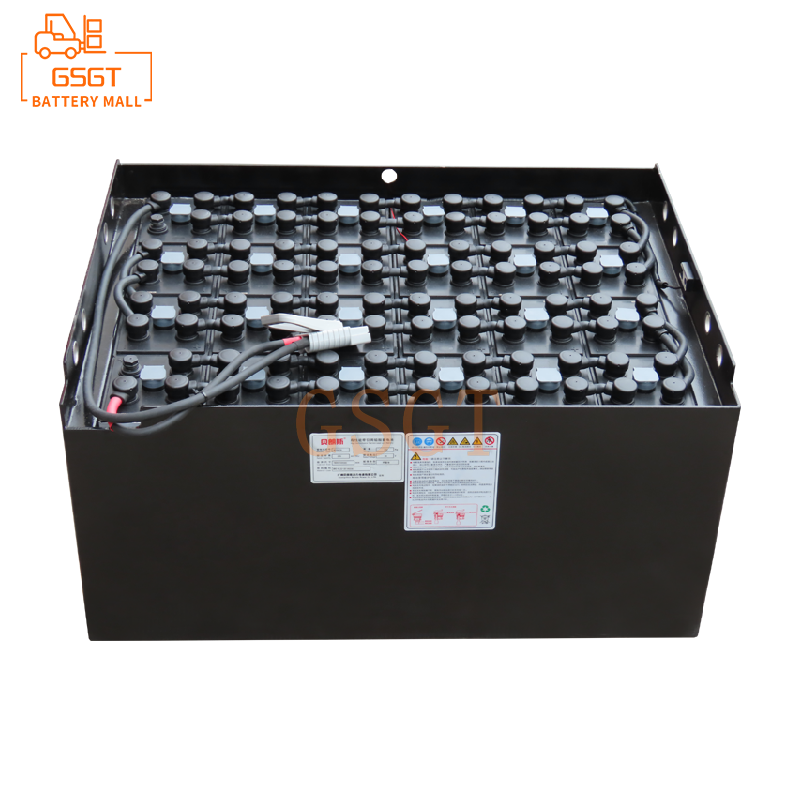Time:2025-07-21 10:55:07
Browse:615
In the operation of forklifts, lead-acid batteries play a crucial role, and their performance directly affects the working efficiency and reliability of forklifts. Interpreting the discharge curve of lead-acid batteries can enable us to gain a deeper understanding of the working state and performance changes of the batteries. So, what mysteries does the discharge curve of forklift lead-acid batteries hold?
What is the discharge curve of forklift lead-acid batteries?
The discharge curve of forklift lead-acid batteries refers to the curve of parameters such as battery terminal voltage, electromotive force and electrolyte density varying with discharge time under specific discharge conditions. It is like a "health check-up form", clearly presenting the changes in various indicators of the battery during the discharge process. Through this curve, we can intuitively understand key information such as how the voltage drops and how the density of the electrolyte changes during the process from a fully charged battery to a depleted one.
The shape characteristics and stage division of the discharge curve
The discharge curve of lead-acid batteries is usually S-shaped and can be roughly divided into three main stages.
Initial discharge - a relatively stable platform area
At the initial stage of discharge, the voltage remains relatively stable, as if it were on a steady platform. This is because at this time, the chemical reactions inside the battery have brought the electrode reactions and electron transport to a balanced state. For instance, when a forklift just starts its operation, the battery voltage can be maintained at a relatively high and stable level for a period of time, providing stable power for the forklift. At this stage, the battery can effectively output electrical energy to meet the normal operation requirements of the forklift.
Mid-discharge - the transition zone where the voltage gradually drops
As the discharge continues, the balance in the platform area is disrupted, and the voltage begins to gradually drop, entering the transition zone. This is because the chemical reactions inside the battery cause the active substances to be constantly consumed, and the concentration of sulfuric acid in the electrolyte is also continuously increasing. At this stage, the forklift may experience a gradual weakening of power. For instance, when moving goods of the same weight, its traveling speed may not be as fast as it was initially.
The end of discharge - the termination zone where the voltage drops sharply
When the discharge is approaching its end, the voltage will drop sharply until it reaches the terminal voltage. This is because the active substances inside the battery are almost exhausted, and a large amount of lead sulfate forms on the surface of the plates, blocking the pores of the plates, making it difficult for the electrolyte to penetrate, slowing down the ion diffusion speed, and increasing the internal resistance. At this point, if the discharge continues, not only will it fail to provide effective power for the forklift, but it may also cause irreversible damage to the battery, such as shortening the battery's service life and reducing its capacity. Therefore, when the voltage drops to the terminal voltage, the discharge must be stopped.
Interpretation of key Parameters in the discharge curve
End-of-discharge (EOD)
The terminal voltage is an important indicator of the end of battery discharge. The terminal voltage is reached when the battery discharges to the point where it can no longer provide sufficient energy to drive the standard open-circuit voltage drop. The terminal voltages of lead-acid batteries for forklifts of different types and specifications vary. Generally speaking, at a 20-hour discharge rate, the terminal voltage of a single cell is approximately 1.75 volts. If the battery voltage drops to around this value during the discharge process, it indicates that the battery is about to run out of power and needs to be charged promptly.
Maximum capacity
Theoretically, if the battery can maintain its initial state indefinitely, the maximum capacity will be achieved in the platform area. However, in reality, due to factors such as internal resistance and self-discharge of batteries, the maximum capacity is usually reached near the terminal voltage. Through the discharge curve, we can calculate the amount of electricity released by the battery at different stages, thereby understanding the gap between the actual capacity of the battery and the theoretical maximum capacity, and evaluating the battery performance.
Capacity
Capacity reflects the charging and discharging capabilities of a battery under certain conditions. On the discharge curve, the battery capacity can be determined by measuring the amount of electricity released in the platform area and the descent area. For instance, if it is known that a certain battery discharges at a specific current, by recording the time from the start of discharge to the end voltage and combining it with the discharge current, the actual capacity of the battery during this discharge process can be calculated.
Internal resistance
Internal resistance is the sum of the resistance between the electrodes and the electrolyte inside the battery as well as the resistance of other components. During the discharge process, internal resistance can cause voltage drop, affecting battery performance. As the discharge proceeds, the internal resistance of the battery gradually increases, which is also one of the reasons for the sharp drop in voltage in the later stage. The rate of voltage drop in the discharge curve can roughly estimate the change in battery internal resistance.
Frequently Asked Questions
Question 1: What factors can affect the shape of the discharge curve?
The shape of the discharge curve is influenced by multiple factors. Firstly, there are battery types and manufacturing processes. Lead-acid batteries produced by different manufacturers have different discharge curves due to differences in plate materials, electrolyte formulas, and manufacturing processes. Secondly, the ambient temperature has a significant impact on the discharge curve. Low temperatures increase the internal resistance of the battery, accelerate the rate of voltage drop, and cause the overall discharge curve to shift downward. High temperatures may accelerate the chemical reactions inside the battery, shorten its lifespan, and also change the shape of the discharge curve. In addition, the magnitude of the discharge current is also of vital importance. When a large current is discharged, the voltage drops more rapidly, the plateau zone shortens, and the curve becomes steeper. When discharging with a small current, the voltage drop is relatively gentle and the plateau area is longer.
Question 2: How to determine the health status of a battery through the discharge curve?
For a healthy battery, the discharge curve should conform to the standard curve shape and parameter range of that model of battery. If the platform area of the discharge curve shortens and the voltage drops too rapidly, it may indicate a decrease in battery capacity and problems such as sulfation of the plates and shedding of active materials. If during the discharge process, the voltage fluctuates abnormally and does not drop smoothly, it may indicate that there are faults such as poor contact or local short circuit inside the battery. In addition, by comparing the discharge curves of new batteries with those of batteries that have been used for a period of time, if the differences are significant, it can also directly reflect the deterioration of the battery's health condition.
Question 3: What guiding significance does the discharge curve have for the daily use and maintenance of forklifts?
Based on the discharge curve, we can reasonably arrange the operation time and charging plan of the forklift. In the platform area, forklifts can operate efficiently. When the voltage enters the drop zone, be prepared to end the current operation and avoid using it at the end of a sharp voltage drop to prevent damage to the battery. In terms of maintenance, regularly drawing the battery discharge curve and comparing it with the initial curve can promptly detect changes in battery performance, allowing for early maintenance and upkeep, such as replenishing the electrolyte and inspecting the condition of the plates, to extend the battery's service life and reduce usage costs.

$3050

$5710

$1690

$1200

MESSAGE
Professional And Efficient
Security
Affordable Price
Professional Services